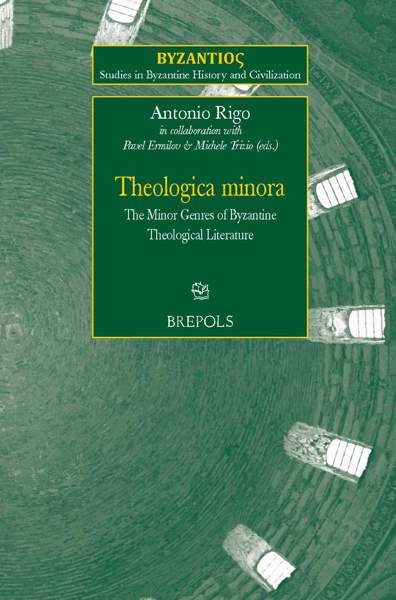
Cult, Devotion, and Aesthetics in Later Byzantine Poetry
Maria-Lucia Goiana, Krystina Kubina (eds)
- Pages: 249 p.
- Size:156 x 234 mm
- Illustrations:6 col., 2 tables b/w.
- Language(s):English, Greek
- Publication Year:2024
- € 75,00 EXCL. VAT RETAIL PRICE
- ISBN: 978-2-503-61172-3
- Paperback
- Available
- € 75,00 EXCL. VAT RETAIL PRICE
- ISBN: 978-2-503-61173-0
- E-book
- Available
- Contains contributions in Open Access
This volume explores the aesthetics of Byzantine poetry in the context of religious practice and devotion from c. the 11th to the 15th centuries.
Maria-Lucia Goiana is a postdoctoral researcher at the Austrian Academy of Sciences, working on hymnography and commentaries on hymns. Her current research project focuses on Nikephoros Kallistou Xanthopoulos's treatises on liturgical hymns and their place in the intellectual history of Late Byzantium.
Krystina Kubina is a research associate at the Austrian Academy of Sciences, specializing in late Byzantine poetry. Her major publications include a monograph on the 14th-century poet Manuel Philes ("Die enkomiastische Dichtung des Manuel Philes. Form und Funktion des literarischen Lobes in der frühen Palaiologenzeit", 2020) and the co-edited volume "Epistolary Poetry in Byzantium and Beyond. An Anthology with Critical Essays" (2021).
Public religious ritual and private devotional practice together occasioned much of the production of Byzantine poetry. This includes not only hymns, an integral part of the liturgy since Late Antiquity, but also versified texts with a specific liturgical function (synaxaria, calendars, metrical prefaces), metrical hagiography, epigrams (inscribed on church buildings, icons, religious objects, books), or poems with a more personal character, such as versified prayers, catanyctic poems (i.e., poems of contrition) and self-addressed poems (eis heauton). These texts often have much in common, well beyond their metrical form: from their contexts of performance and reception to the themes, literary motifs, and rhetorical devices they contain. It was not uncommon for a single author to write in a variety of the aforementioned genres; and yet these texts are rarely studied together (not least due to the specialized nature of the expertise of individual scholars). Later Byzantium offers us a particularly rich spectrum of sacred poetry, which has only recently started to arouse significant interest. While most of its poetic genres have a long history in Byzantine literature, their metamorphoses in this period – connected to changes in socio-political, cultural and religious conditions – deserve closer study. It is the purpose of this volume to propose a broader scholarly approach to the aesthetics of Byzantine poetry, taking into consideration the contexts of religious practice and devotion from c. the 11th to the 15th centuries.
Maria-Lucia Goiana & Krystina Kubina, Introduction
Stratis Papaioannou, The History of the Kontakion Revisited: And a Plea for the Study of the Byzantine Sacred Song after the Year 1000
Maria-Lucia Goiana & Krystina Kubina, Worshipping Verse: Liturgy as Occasion in Nikephoros Kallistou Xanthopoulos’s Poetry
Silvia Tessari, ‘New Music’ in MS Milan, Biblioteca Ambrosiana L 36 sup. (Martini-Bassi 476): With a New Critical Edition of the Set of Megalynaria Ascribed to Patriarch Germanos
Maria Tomadaki, A Forgotten Liturgical Poem on the Passion of Christ (BHG 413m)
Paraskevi Toma, George Eugenikos’s Kanon on Saint Spyridon
Dimitrios Skrekas, Neophytos, Bishop of Grevenou, a Lesser-Known Fifteenth-Century Hymnographer and his Hymnographic Activity
Ioanna Skoura, Teaching Easter Computus with Verse: A Didactic Poem in Laur. Plut. 87.16




